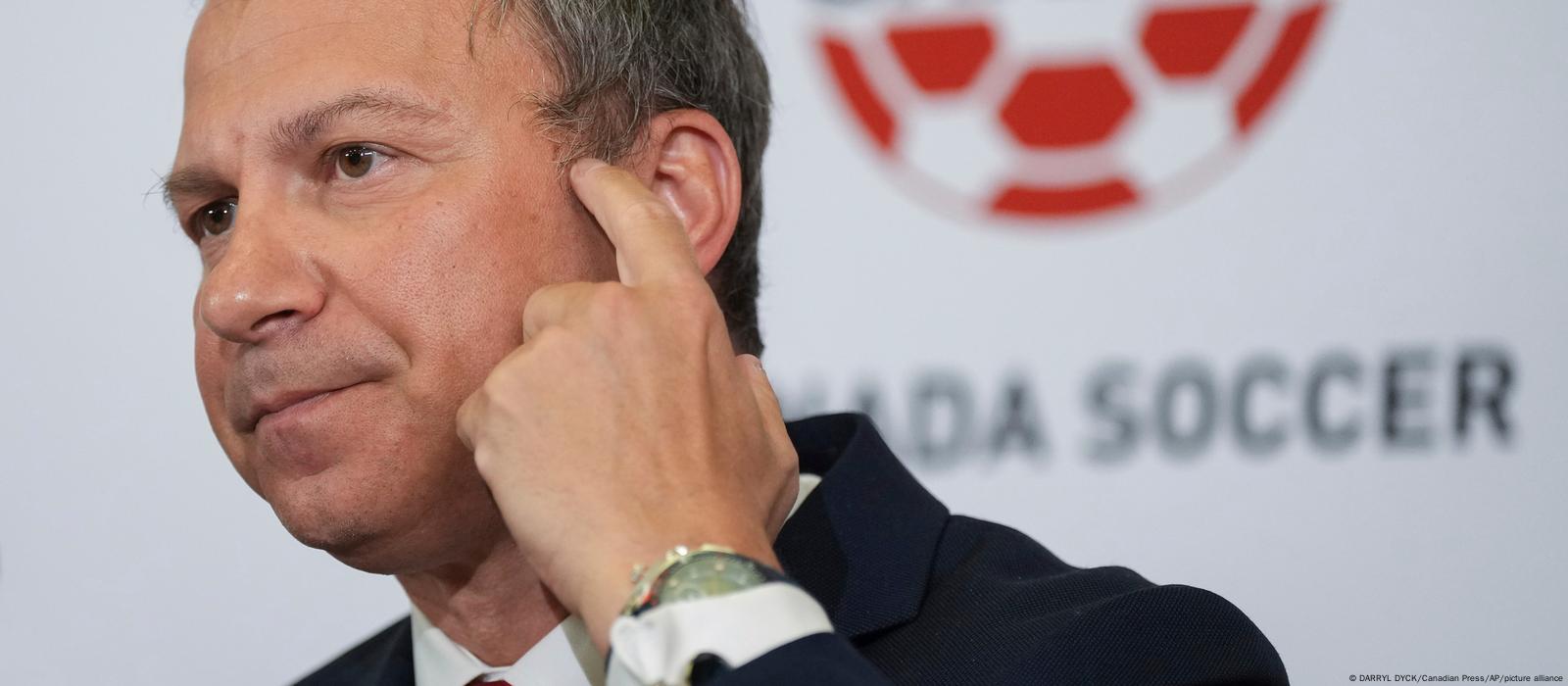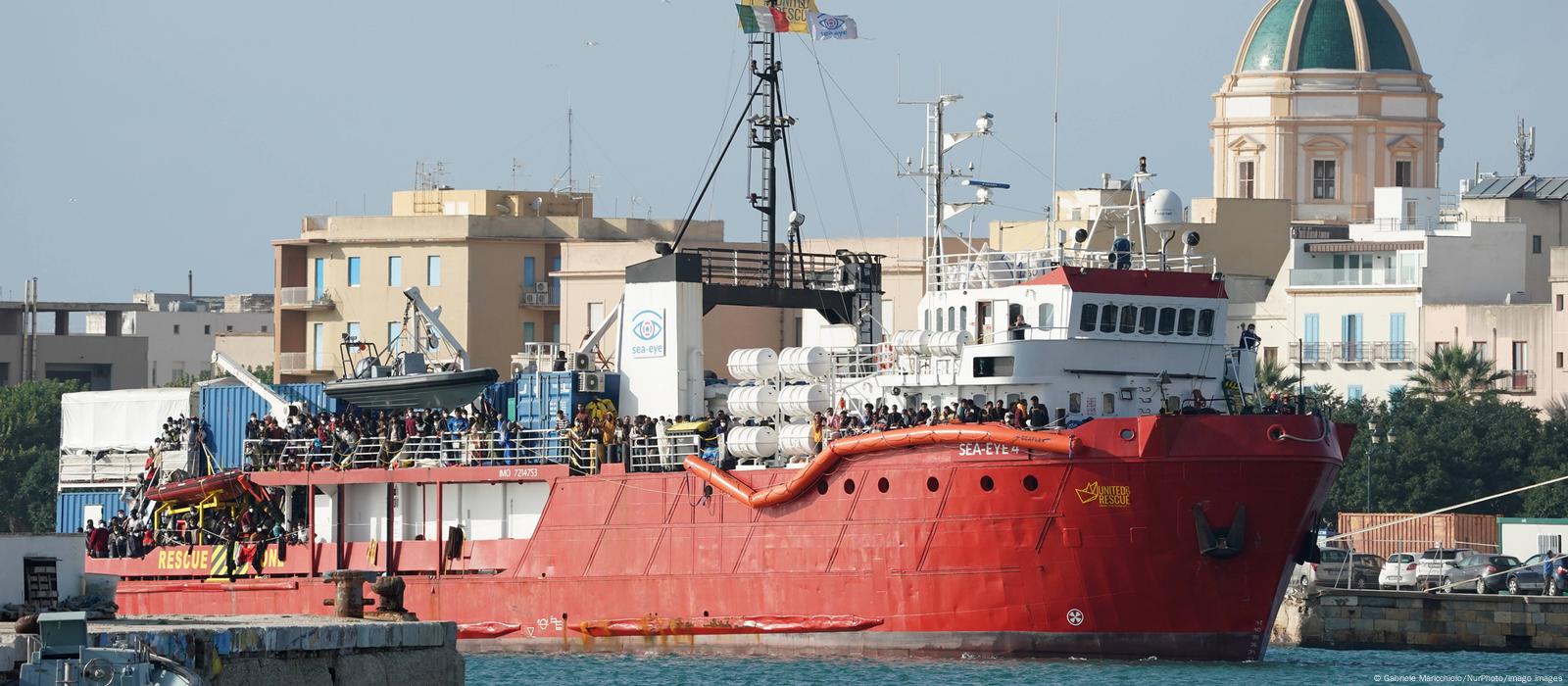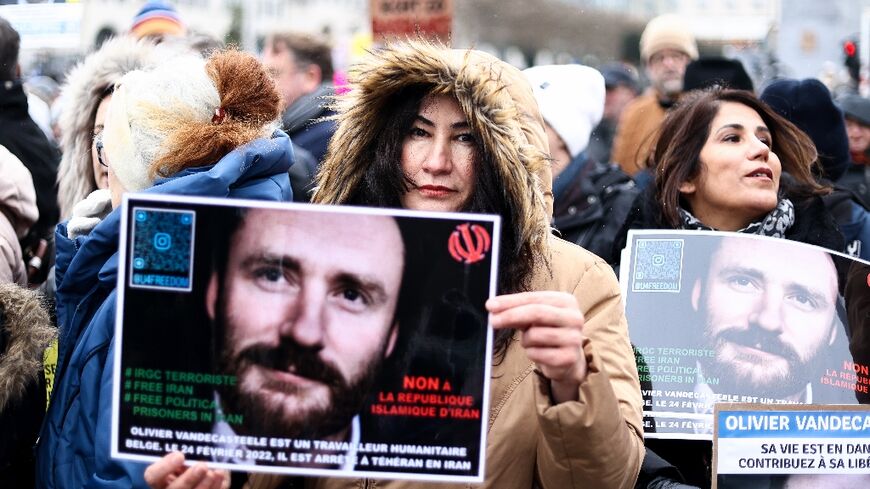Coronavirus origins still a mystery 3 years into pandemic
By LAURA UNGAR and MARY CLARE JALONICK
February 27, 2023

This 2020 electron microscope image made available by the Centers for Disease Control and Prevention shows SARS-CoV-2 virus particles, which cause COVID-19. A crucial question has eluded governments and health agencies since the COVID-19 pandemic began: Did the virus originate in animals or leak from a Chinese lab? Now, the U.S. Department of Energy has assessed with “low confidence” that it began with a lab leak although others in the U.S. intelligence community disagree. (Hannah A. Bullock, Azaibi Tamin/CDC via AP, File)
WASHINGTON (AP) — A crucial question has eluded governments and health agencies around the world since the COVID-19 pandemic began: Did the virus originate in animals or leak from a Chinese lab?
Now, the U.S. Department of Energy has assessed with “low confidence” in that it began with a lab leak, according to a person familiar with the report who wasn’t authorized to discuss it. The report has not been made public.
But others in the U.S. intelligence community disagree.
“There is not a consensus right now in the U.S. government about exactly how COVID started,” John Kirby, the spokesman for the National Security Council, said Monday. “There is just not an intelligence community consensus.”
The DOE’s conclusion was first reported over the weekend in the Wall Street Journal, which said the classified report was based on new intelligence and noted in an update to a 2021 document. The DOE oversees a national network of labs.
White House officials on Monday declined to confirm press reports about the assessment.
In 2021, officials released an intelligence report summary that said four members of the U.S. intelligence community believed with low confidence that the virus was first transmitted from an animal to a human, and a fifth believed with moderate confidence that the first human infection was linked to a lab.
While some scientists are open to the lab-leak theory, others continue to believe the virus came from animals, mutated, and jumped into people — as has happened in the past with viruses. Experts say the true origin of the pandemic may not be known for many years — if ever.

This 2020 electron microscope image made available by the Centers for Disease Control and Prevention shows SARS-CoV-2 virus particles, which cause COVID-19. A crucial question has eluded governments and health agencies since the COVID-19 pandemic began: Did the virus originate in animals or leak from a Chinese lab? Now, the U.S. Department of Energy has assessed with “low confidence” that it began with a lab leak although others in the U.S. intelligence community disagree. (Hannah A. Bullock, Azaibi Tamin/CDC via AP, File)
WASHINGTON (AP) — A crucial question has eluded governments and health agencies around the world since the COVID-19 pandemic began: Did the virus originate in animals or leak from a Chinese lab?
Now, the U.S. Department of Energy has assessed with “low confidence” in that it began with a lab leak, according to a person familiar with the report who wasn’t authorized to discuss it. The report has not been made public.
But others in the U.S. intelligence community disagree.
“There is not a consensus right now in the U.S. government about exactly how COVID started,” John Kirby, the spokesman for the National Security Council, said Monday. “There is just not an intelligence community consensus.”
The DOE’s conclusion was first reported over the weekend in the Wall Street Journal, which said the classified report was based on new intelligence and noted in an update to a 2021 document. The DOE oversees a national network of labs.
White House officials on Monday declined to confirm press reports about the assessment.
In 2021, officials released an intelligence report summary that said four members of the U.S. intelligence community believed with low confidence that the virus was first transmitted from an animal to a human, and a fifth believed with moderate confidence that the first human infection was linked to a lab.
While some scientists are open to the lab-leak theory, others continue to believe the virus came from animals, mutated, and jumped into people — as has happened in the past with viruses. Experts say the true origin of the pandemic may not be known for many years — if ever.
CALLS FOR MORE INVESTIGATION
The U.S. Office of the Director of National Intelligence declined to comment on the report. All 18 offices of the U.S. intelligence community had access to the information the DOE used in reaching its assessment.
Alina Chan, a molecular biologist at the Broad Institute of Massachusetts Institute of Technology and Harvard, said she isn’t sure what new intelligence the agencies had, but “it’s reasonable to infer” it relates to activities at the Wuhan Institute of Virology in China. She said a 2018 research proposal co-authored by scientists there and their U.S. collaborators “essentially described a blueprint for COVID-like viruses.”
“Less than two years later, such a virus was causing an outbreak in the city,” she said.
The Wuhan institute had been studying coronaviruses for years, in part because of widespread concerns — tracing back to SARS — that coronaviruses could be the source of the next pandemic.
No intelligence agency has said they believe the coronavirus that caused COVID-19 was released intentionally. The unclassified 2021 summary was clear on this point, saying: “We judge the virus was not developed as a biological weapon.”
“Lab accidents happen at a surprising frequency. A lot of people don’t really hear about lab accidents because they’re not talked about publicly,” said Chan, who co-authored a book about the search for COVID-19 origins. Such accidents “underscore a need to make work with highly dangerous pathogens more transparent and more accountable.”
Last year, the World Health Organization recommended a deeper probe into a possible lab accident. Chan said she hopes the latest report sparks more investigation in the United States.
China has called the suggestion that COVID-19 came from a Chinese laboratory “ baseless.”
SUPPORT FOR ANIMAL THEORY
Many scientists believe the animal-to-human theory of the coronavirus remains much more plausible. They theorize it emerged in the wild and jumped from bats to humans, either directly or through another animal.
In a 2021 research paper in the journal Cell, scientists said the COVID-19 virus is the ninth documented coronavirus to infect humans — and all the previous ones originated in animals.
Two studies, published last year by the journal Science, bolstered the animal origin theory. That research found that the Huanan Seafood Wholesale Market in Wuhan was likely the early epicenter. Scientists concluded that the virus likely spilled from animals into people two separate times.
“The scientific literature contains essentially nothing but original research articles that support a natural origin of this virus pandemic,” said Michael Worobey, an evolutionary biologist at the University of Arizona who has extensively studied COVID-19′s origins.
He said the fact that others in the intelligence community looked at the same information as the DOE and “it apparently didn’t move the needle speaks volumes.” He said he takes such intelligence assessments with a grain of salt because he doesn’t think the people making them “have the scientific expertise ... to really understand the most important evidence that they need to understand.”
The U.S. should be more transparent and release the new intelligence that apparently swayed the DOE, Worobey said.
REACTION TO THE REPORT
The DOE conclusion comes to light as House Republicans have been using their new majority power to investigate all aspects of the pandemic, including the origin, as well as what they contend were officials’ efforts to conceal the fact that it leaked from a lab in Wuhan. Earlier this month, Republicans sent letters to Dr. Anthony Fauci, National Intelligence Director Avril Haines, Health Secretary Xavier Beccera and others as part of their investigative efforts.
The now retired Fauci, who served as the country’s top infectious disease expert under both Republican and Democratic presidents, has called the GOP criticism nonsense.
Rep. Mike McCaul, R-Texas, chairman of the House Foreign Affairs Committee, has asked the Biden administration to provide Congress with “a full and thorough” briefing on the report and the evidence behind it.
Kirby, the National Security Council spokesman, emphasized that President Joe Biden believes it’s important to know what happened “so we can better prevent future pandemics” but that such research “must be done in a safe and secure manner and as transparent as possible to the rest of the world.”
___
AP reporters Farnoush Amiri, Nomaan Merchant and Seung Min Kim contributed. Ungar reported from Louisville, Kentucky
___
The Associated Press Health and Science Department receives support from the Howard Hughes Medical Institute’s Science and Educational Media Group. The AP is solely responsible for all content.
Covid-19: Why the Wuhan lab-leak theory is back, despite no new evidence

What is the lab-leak theory?
It's a suspicion that the coronavirus may have escaped, accidentally or otherwise, from a laboratory in the central Chinese city of Wuhan where the virus was first recorded.
Its supporters point to the presence of a major biological research facility in the city. The Wuhan Institute of Virology (WIV) has been studying coronaviruses in bats for over a decade.
The institute is a 40-minute drive from the Huanan wet market where the first cluster of infections emerged.
Those who entertain the theory say it could have leaked from a WIV lab and spread to the wet market. Most argue it would have been an unaltered virus collected from the wild, rather than engineered.
The controversial theory first emerged early on in the pandemic, and was promoted by then-US President Donald Trump. Some even suggested it could have been engineered as a possible biological weapon.
While many in the media and politics dismissed these as conspiracy theories at the time, others called for more consideration of the possibility. The idea has persisted, despite many scientists pointing out there is no evidence to back it up.
A classified US intelligence report - saying three researchers at the Wuhan laboratory were treated in hospital in November 2019, just before the virus began infecting humans in the city - began circulating in US media in 2021.
Those who entertain the theory say it could have leaked from a WIV lab and spread to the wet market. Most argue it would have been an unaltered virus collected from the wild, rather than engineered.
The controversial theory first emerged early on in the pandemic, and was promoted by then-US President Donald Trump. Some even suggested it could have been engineered as a possible biological weapon.
While many in the media and politics dismissed these as conspiracy theories at the time, others called for more consideration of the possibility. The idea has persisted, despite many scientists pointing out there is no evidence to back it up.
A classified US intelligence report - saying three researchers at the Wuhan laboratory were treated in hospital in November 2019, just before the virus began infecting humans in the city - began circulating in US media in 2021.
What do scientists think?
The issue is still hotly contested.
A World Health Organisation (WHO) investigation was supposed to get to the bottom of it, but many experts believed it produced more questions than answers.
A team of WHO-appointed scientists flew to Wuhan in early 2021 on a mission to investigate the source of the pandemic. After spending 12 days there, which included a visit to the laboratory, the team concluded the lab-leak theory was "extremely unlikely".
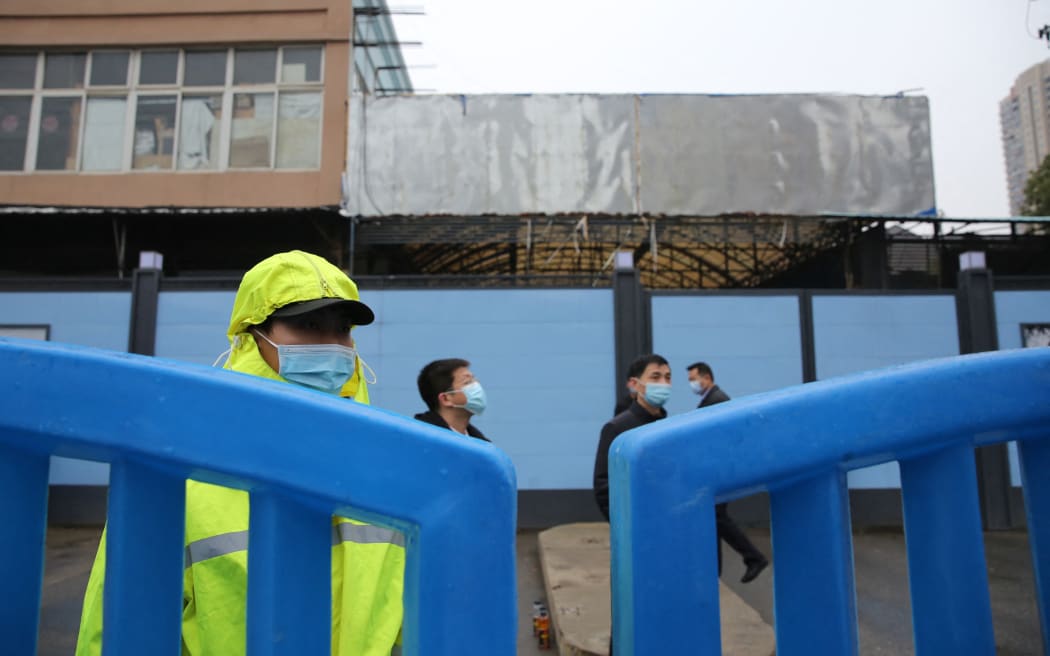
WHO investigators in Wuhan. Photo: AFP
But many have since questioned their findings.
A prominent group of scientists criticised the WHO report for not taking the lab-leak theory seriously enough - it was dismissed in a few pages of a several-hundred-page report.
"We must take hypotheses about both natural and laboratory spillovers seriously until we have sufficient data," the scientists wrote in Science magazine.
They're not the only experts who called for the laboratory leak to be looked at more closely.
Even the WHO's own director-general, Dr Tedros Adhanom Ghebreyesus, called for a new investigation, saying: "All hypotheses remain open and require further study."
And Dr Anthony Fauci said in 2021 he was "not convinced" the virus originated naturally. That was a shift from a year earlier, when he thought it most likely Covid had spread from animals to humans.
What does China say?
China has hit back at suggestions the virus may have escaped from a laboratory by calling it a smear. State media have consistently accused the US government and Western media of spreading rumours about the source of the pandemic.
Responding to Wray's remarks, China's foreign ministry spokesperson accused US intelligence agencies of politicising the investigation into the origins of the virus.
The US intelligence community had a history of "misdeeds" involving "fraud and deception", Mao Ning told a press briefing. As such, she said, their conclusions regarding the origins of Covid-19 had no credibility.
China has pushed another theory, suggesting the coronavirus may have entered Wuhan in food shipments of frozen meat from elsewhere in China or Southeast Asia.
The Chinese government has also pointed to research published by one of its leading virologists into samples collected from bats in a remote, abandoned mine.
Prof Shi Zhengli - often referred to as "China's Batwoman" - a researcher at the Wuhan Institute, published a report in 2021 revealing that her team had identified eight coronavirus strains found on bats in the mine in China in 2015. The paper says that coronaviruses from pangolins pose more of an immediate threat to human health than the ones her team found in the mine.
Added to this is an unsubstantiated conspiracy theory long pushed by Chinese propagandists - and repeated by Mao Ning at the foreign ministry briefing on 1 March 2023 - suggesting the coronavirus was made and leaked from Fort Detrick in Frederick, Maryland, about 80km north of Washington DC.
Once the centre of the US biological weapons programme, Fort Detrick now houses biomedical labs researching viruses including Ebola and smallpox.
Is there another theory?
Yes, and it's called the "natural origin" theory.
This argues the virus spread naturally from animals, without the involvement of any scientists or laboratories.
Supporters of the natural origin hypothesis say Covid-19 emerged in bats and then jumped to humans, most likely through another animal, or "intermediary host".
That idea was backed by the WHO report, which said it was "likely to very likely" that Covid-19 had made it to humans through an intermediate host.
This hypothesis was widely accepted at the start of the pandemic, but as time has worn on, scientists have not found a virus in either bats or another animal that matches the genetic make-up of Covid-19, leading some to doubt the theory.
Nevertheless, following FBI director Wray's remarks, many scientists who have studied the virus have stressed there is no new scientific evidence pointing to a lab leak.
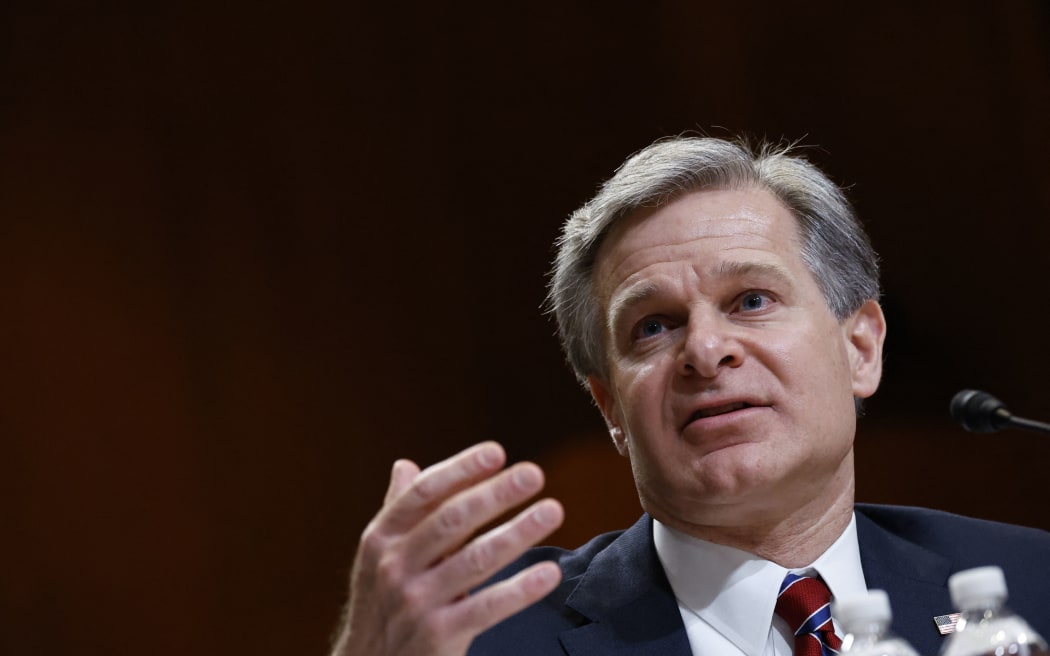
FBI director Christopher Wray. Photo: AFP / Pool / Ting Shen
A natural origin is still the more likely theory, said Professor David Robertson, head of viral genomics and bioinformatics at the University of Glasgow.
"There's been an accumulation of evidence (what we know about the viruses' biology, the close variants circulating in bats and locations of early human cases) that firmly points to a natural origin centred on the Huanan market in Wuhan city," he said.
Prof Alice Hughes from the University of Hong Kong agreed. She said the US Department of Energy's conclusion that the virus was most likely the result of a lab leak in Wuhan "appears not to be based on new evidence, and remains the weaker of the two main hypothesis of the origin of the virus"

The Wuhan Institute of Virology. Photo: The Yomiuri Shimbun via AFP
Explainer: More than three years after Covid-19 was detected in the Chinese city of Wuhan, the question of how the virus first emerged remains a mystery.
But on 28 February 2023, the controversial claim that the pandemic might have leaked from a Chinese laboratory - once dismissed by many as a fringe conspiracy theory - resurfaced with FBI director Christopher Wray's comments that the bureau believes Covid-19 "most likely" originated in a "Chinese government-controlled lab".
It is the first public confirmation of the FBI's classified judgement of how the pandemic virus emerged.
In response, Beijing accused Washington of "political manipulation".
So what do we know about the competing theories - and why does the debate matter?
Explainer: More than three years after Covid-19 was detected in the Chinese city of Wuhan, the question of how the virus first emerged remains a mystery.
But on 28 February 2023, the controversial claim that the pandemic might have leaked from a Chinese laboratory - once dismissed by many as a fringe conspiracy theory - resurfaced with FBI director Christopher Wray's comments that the bureau believes Covid-19 "most likely" originated in a "Chinese government-controlled lab".
It is the first public confirmation of the FBI's classified judgement of how the pandemic virus emerged.
In response, Beijing accused Washington of "political manipulation".
So what do we know about the competing theories - and why does the debate matter?
What is the lab-leak theory?
It's a suspicion that the coronavirus may have escaped, accidentally or otherwise, from a laboratory in the central Chinese city of Wuhan where the virus was first recorded.
Its supporters point to the presence of a major biological research facility in the city. The Wuhan Institute of Virology (WIV) has been studying coronaviruses in bats for over a decade.
The institute is a 40-minute drive from the Huanan wet market where the first cluster of infections emerged.
Those who entertain the theory say it could have leaked from a WIV lab and spread to the wet market. Most argue it would have been an unaltered virus collected from the wild, rather than engineered.
The controversial theory first emerged early on in the pandemic, and was promoted by then-US President Donald Trump. Some even suggested it could have been engineered as a possible biological weapon.
While many in the media and politics dismissed these as conspiracy theories at the time, others called for more consideration of the possibility. The idea has persisted, despite many scientists pointing out there is no evidence to back it up.
A classified US intelligence report - saying three researchers at the Wuhan laboratory were treated in hospital in November 2019, just before the virus began infecting humans in the city - began circulating in US media in 2021.
Those who entertain the theory say it could have leaked from a WIV lab and spread to the wet market. Most argue it would have been an unaltered virus collected from the wild, rather than engineered.
The controversial theory first emerged early on in the pandemic, and was promoted by then-US President Donald Trump. Some even suggested it could have been engineered as a possible biological weapon.
While many in the media and politics dismissed these as conspiracy theories at the time, others called for more consideration of the possibility. The idea has persisted, despite many scientists pointing out there is no evidence to back it up.
A classified US intelligence report - saying three researchers at the Wuhan laboratory were treated in hospital in November 2019, just before the virus began infecting humans in the city - began circulating in US media in 2021.
What do scientists think?
The issue is still hotly contested.
A World Health Organisation (WHO) investigation was supposed to get to the bottom of it, but many experts believed it produced more questions than answers.
A team of WHO-appointed scientists flew to Wuhan in early 2021 on a mission to investigate the source of the pandemic. After spending 12 days there, which included a visit to the laboratory, the team concluded the lab-leak theory was "extremely unlikely".

WHO investigators in Wuhan. Photo: AFP
But many have since questioned their findings.
A prominent group of scientists criticised the WHO report for not taking the lab-leak theory seriously enough - it was dismissed in a few pages of a several-hundred-page report.
"We must take hypotheses about both natural and laboratory spillovers seriously until we have sufficient data," the scientists wrote in Science magazine.
They're not the only experts who called for the laboratory leak to be looked at more closely.
Even the WHO's own director-general, Dr Tedros Adhanom Ghebreyesus, called for a new investigation, saying: "All hypotheses remain open and require further study."
And Dr Anthony Fauci said in 2021 he was "not convinced" the virus originated naturally. That was a shift from a year earlier, when he thought it most likely Covid had spread from animals to humans.
What does China say?
China has hit back at suggestions the virus may have escaped from a laboratory by calling it a smear. State media have consistently accused the US government and Western media of spreading rumours about the source of the pandemic.
Responding to Wray's remarks, China's foreign ministry spokesperson accused US intelligence agencies of politicising the investigation into the origins of the virus.
The US intelligence community had a history of "misdeeds" involving "fraud and deception", Mao Ning told a press briefing. As such, she said, their conclusions regarding the origins of Covid-19 had no credibility.
China has pushed another theory, suggesting the coronavirus may have entered Wuhan in food shipments of frozen meat from elsewhere in China or Southeast Asia.
The Chinese government has also pointed to research published by one of its leading virologists into samples collected from bats in a remote, abandoned mine.
Prof Shi Zhengli - often referred to as "China's Batwoman" - a researcher at the Wuhan Institute, published a report in 2021 revealing that her team had identified eight coronavirus strains found on bats in the mine in China in 2015. The paper says that coronaviruses from pangolins pose more of an immediate threat to human health than the ones her team found in the mine.
Added to this is an unsubstantiated conspiracy theory long pushed by Chinese propagandists - and repeated by Mao Ning at the foreign ministry briefing on 1 March 2023 - suggesting the coronavirus was made and leaked from Fort Detrick in Frederick, Maryland, about 80km north of Washington DC.
Once the centre of the US biological weapons programme, Fort Detrick now houses biomedical labs researching viruses including Ebola and smallpox.
Is there another theory?
Yes, and it's called the "natural origin" theory.
This argues the virus spread naturally from animals, without the involvement of any scientists or laboratories.
Supporters of the natural origin hypothesis say Covid-19 emerged in bats and then jumped to humans, most likely through another animal, or "intermediary host".
That idea was backed by the WHO report, which said it was "likely to very likely" that Covid-19 had made it to humans through an intermediate host.
This hypothesis was widely accepted at the start of the pandemic, but as time has worn on, scientists have not found a virus in either bats or another animal that matches the genetic make-up of Covid-19, leading some to doubt the theory.
Nevertheless, following FBI director Wray's remarks, many scientists who have studied the virus have stressed there is no new scientific evidence pointing to a lab leak.

FBI director Christopher Wray. Photo: AFP / Pool / Ting Shen
A natural origin is still the more likely theory, said Professor David Robertson, head of viral genomics and bioinformatics at the University of Glasgow.
"There's been an accumulation of evidence (what we know about the viruses' biology, the close variants circulating in bats and locations of early human cases) that firmly points to a natural origin centred on the Huanan market in Wuhan city," he said.
Prof Alice Hughes from the University of Hong Kong agreed. She said the US Department of Energy's conclusion that the virus was most likely the result of a lab leak in Wuhan "appears not to be based on new evidence, and remains the weaker of the two main hypothesis of the origin of the virus"
.
Why does this matter?
Given the massive human toll of the pandemic - with the recorded deaths of about 6.9 million people worldwide - most scientists think understanding how and where the virus originated is crucial to prevent it happening again.
If the "zoonotic" theory is proved correct, it could affect activities such as farming and wildlife exploitation. In Denmark, fears about the spread of the virus through mink farming led to millions of mink being culled.
But there would also be big implications for scientific research and international trade if theories related to a laboratory leak or frozen food chains were confirmed.
Any confirmation of a leak may also affect how the world views China, which has already been accused of hiding crucial early information about the pandemic, and place further strain on US-China relations.
"From day one China has been engaged in a massive cover-up," Jamie Metzl, a fellow at the Washington-based Atlantic Council who has been pushing for the lab-leak theory to be looked into, told the BBC in 2021.
"We should be demanding the full investigation of all origin hypotheses that's required."
But others have cautioned against pointing the finger at China too quickly.
"We do need to be a bit patient but we also need to be diplomatic. We can't do this without support from China. It needs to be a no-blame environment," Prof Dale Fisher, of Singapore's National University Hospital, told the BBC.
- BBC
Why does this matter?
Given the massive human toll of the pandemic - with the recorded deaths of about 6.9 million people worldwide - most scientists think understanding how and where the virus originated is crucial to prevent it happening again.
If the "zoonotic" theory is proved correct, it could affect activities such as farming and wildlife exploitation. In Denmark, fears about the spread of the virus through mink farming led to millions of mink being culled.
But there would also be big implications for scientific research and international trade if theories related to a laboratory leak or frozen food chains were confirmed.
Any confirmation of a leak may also affect how the world views China, which has already been accused of hiding crucial early information about the pandemic, and place further strain on US-China relations.
"From day one China has been engaged in a massive cover-up," Jamie Metzl, a fellow at the Washington-based Atlantic Council who has been pushing for the lab-leak theory to be looked into, told the BBC in 2021.
"We should be demanding the full investigation of all origin hypotheses that's required."
But others have cautioned against pointing the finger at China too quickly.
"We do need to be a bit patient but we also need to be diplomatic. We can't do this without support from China. It needs to be a no-blame environment," Prof Dale Fisher, of Singapore's National University Hospital, told the BBC.
- BBC
Latest report on COVID-19’s suspected lab origins fuels more conspiracies: ‘Everything we skeptics said was true’
BYDAVID KLEPPER AND THE ASSOCIATED PRESS
March 1, 2023

Origin conspiracies about COVID-19 are increasing again.
SUZANNE. KREITER—THE BOSTON GLOBE/GETTY IMAGES
COVID-19’s origins remain hazy. Three years after the start of the pandemic, it’s still unclear whether the coronavirus that causes the disease leaked from a lab or spread to humans from an animal.
This much is known: When it comes to COVID-19 misinformation, any new report on the virus’ origin quickly triggers a relapse and a return of misleading claims about the virus, vaccines and masks that have reverberated since the pandemic began.
It happened again this week after the Energy Department confirmed that a classified report determined, with low confidence, that the virus escaped from a lab. Within hours, online mentions of conspiracy theories involving COVID-19 began to rise, with many commenters saying the classified report was proof they were right all along.
Far from definitive, the Energy Department’s report is the latest of many attempts by scientists and officials to identify the origin of the virus, which has now killed nearly 7 million people after being first detected in the central Chinese city of Wuhan in late 2019.
The report has not been made public, and officials in Washington stressed that a variety of U.S. agencies are not in agreement on the origin. On Tuesday, FBI Director Christopher Wray told Fox News that the FBI “has for quite some time now” assessed that the pandemic’s origins are “most likely a potential lab incident in Wuhan.”
But others in the U.S. intelligence community disagree, and there’s no consensus. Many scientists believe the likeliest explanation is that the coronavirus that causes COVID-19 jumped from animals to humans, possibly at Wuhan’s Huanan market, a scenario backed up by multiple studies and reports. The World Health Organization has said that while an animal origin remains most likely, the possibility of a lab leak must be investigated further before it can be ruled out.
People should be open-minded about the evidence used in the Energy Department’s assessment, according to virologist Angela Rasmussen. But she said that without evaluating the evidence contained in the classified report, there’s no reason to challenge the conclusion that the virus spread naturally.
“We can and do know what the scientific evidence shows,” Rasmussen tweeted Tuesday. “The available evidence still shows zoonotic emergence at Huanan market.”
Many of those citing the report as proof, however, seemed uninterested in the evidence. They seized on the report and said it suggests the experts were wrong when it came to masks and vaccines, too.
“School closures were a failed & catastrophic policy. Masks are ineffective. And harmful,” said a tweet that’s been read nearly 300,000 times since Sunday. “COVID came from a lab. Everything we skeptics said was true.”
Overall mentions of COVID-19 began to rise after The Wall Street Journal published a story about the Energy Department report on Sunday. Since then, mentions of various COVID-related conspiracy theories have soared, according to an analysis conducted by Zignal Labs, a San Francisco-based media intelligence firm, and shared with The Associated Press.
While the lab leak theory has bounced around the internet since the pandemic began, references to it soared 100,000% in the 48 hours after the Energy Department report was revealed, according to Zignal’s analysis, which combed through social media, blogs and other sites.
Many of the conspiracy theories contradict each other and the findings in the Energy Department report. In a tweet on Tuesday, U.S. Rep. Marjorie Taylor Greene, a Republican from Georgia, called COVID-19 a “man made bioweapon from China.” A follower quickly challenged her: “It was made in Ukraine,” he responded.
With so many questions remaining about a world event that has claimed so many lives and upended even more, it’s not at all surprising that COVID-19 is still capable of generating so much anger and misinformation, according to Bret Schafer, a senior fellow at the Alliance for Securing Democracy, a Washington-based organization that has tracked government propaganda about COVID-19.
“The pandemic was so incredibly disruptive to everyone. The intensity of feelings about COVID, I don’t think that’s going to go away,” Schafer said. “And any time something new comes along, it breathes new life into these grievances and frustrations, real or imagined.”
Chinese government officials have in the past used their social media accounts to amplify anti-U.S. conspiracy theories, including some that suggested the U.S. created the COVID-19 virus and framed its release on China.
So far, they’ve taken a quieter approach to the Energy Department report. In their official response, China’s government dismissed the agency’s assessment as an effort to politicize the pandemic. Online, Beijing’s sprawling propaganda and disinformation network was largely silent, with just a few posts criticizing or mocking the report.
“BREAKING,” a pro-China YouTuber wrote on Twitter. “I can now announce, with ‘low confidence,’ that the COVID pandemic began as a leak from Hunter Biden’s laptop.”
BYDAVID KLEPPER AND THE ASSOCIATED PRESS
March 1, 2023

Origin conspiracies about COVID-19 are increasing again.
SUZANNE. KREITER—THE BOSTON GLOBE/GETTY IMAGES
COVID-19’s origins remain hazy. Three years after the start of the pandemic, it’s still unclear whether the coronavirus that causes the disease leaked from a lab or spread to humans from an animal.
This much is known: When it comes to COVID-19 misinformation, any new report on the virus’ origin quickly triggers a relapse and a return of misleading claims about the virus, vaccines and masks that have reverberated since the pandemic began.
It happened again this week after the Energy Department confirmed that a classified report determined, with low confidence, that the virus escaped from a lab. Within hours, online mentions of conspiracy theories involving COVID-19 began to rise, with many commenters saying the classified report was proof they were right all along.
Far from definitive, the Energy Department’s report is the latest of many attempts by scientists and officials to identify the origin of the virus, which has now killed nearly 7 million people after being first detected in the central Chinese city of Wuhan in late 2019.
The report has not been made public, and officials in Washington stressed that a variety of U.S. agencies are not in agreement on the origin. On Tuesday, FBI Director Christopher Wray told Fox News that the FBI “has for quite some time now” assessed that the pandemic’s origins are “most likely a potential lab incident in Wuhan.”
But others in the U.S. intelligence community disagree, and there’s no consensus. Many scientists believe the likeliest explanation is that the coronavirus that causes COVID-19 jumped from animals to humans, possibly at Wuhan’s Huanan market, a scenario backed up by multiple studies and reports. The World Health Organization has said that while an animal origin remains most likely, the possibility of a lab leak must be investigated further before it can be ruled out.
People should be open-minded about the evidence used in the Energy Department’s assessment, according to virologist Angela Rasmussen. But she said that without evaluating the evidence contained in the classified report, there’s no reason to challenge the conclusion that the virus spread naturally.
“We can and do know what the scientific evidence shows,” Rasmussen tweeted Tuesday. “The available evidence still shows zoonotic emergence at Huanan market.”
Many of those citing the report as proof, however, seemed uninterested in the evidence. They seized on the report and said it suggests the experts were wrong when it came to masks and vaccines, too.
“School closures were a failed & catastrophic policy. Masks are ineffective. And harmful,” said a tweet that’s been read nearly 300,000 times since Sunday. “COVID came from a lab. Everything we skeptics said was true.”
Overall mentions of COVID-19 began to rise after The Wall Street Journal published a story about the Energy Department report on Sunday. Since then, mentions of various COVID-related conspiracy theories have soared, according to an analysis conducted by Zignal Labs, a San Francisco-based media intelligence firm, and shared with The Associated Press.
While the lab leak theory has bounced around the internet since the pandemic began, references to it soared 100,000% in the 48 hours after the Energy Department report was revealed, according to Zignal’s analysis, which combed through social media, blogs and other sites.
Many of the conspiracy theories contradict each other and the findings in the Energy Department report. In a tweet on Tuesday, U.S. Rep. Marjorie Taylor Greene, a Republican from Georgia, called COVID-19 a “man made bioweapon from China.” A follower quickly challenged her: “It was made in Ukraine,” he responded.
With so many questions remaining about a world event that has claimed so many lives and upended even more, it’s not at all surprising that COVID-19 is still capable of generating so much anger and misinformation, according to Bret Schafer, a senior fellow at the Alliance for Securing Democracy, a Washington-based organization that has tracked government propaganda about COVID-19.
“The pandemic was so incredibly disruptive to everyone. The intensity of feelings about COVID, I don’t think that’s going to go away,” Schafer said. “And any time something new comes along, it breathes new life into these grievances and frustrations, real or imagined.”
Chinese government officials have in the past used their social media accounts to amplify anti-U.S. conspiracy theories, including some that suggested the U.S. created the COVID-19 virus and framed its release on China.
So far, they’ve taken a quieter approach to the Energy Department report. In their official response, China’s government dismissed the agency’s assessment as an effort to politicize the pandemic. Online, Beijing’s sprawling propaganda and disinformation network was largely silent, with just a few posts criticizing or mocking the report.
“BREAKING,” a pro-China YouTuber wrote on Twitter. “I can now announce, with ‘low confidence,’ that the COVID pandemic began as a leak from Hunter Biden’s laptop.”
US’ hype of COVID-19 origin-tracing issue will only undermine its own credibility: Chinese FM
By Global Times
Chinese Foreign Ministry on Tuesday refuted the COVID-19 origin-tracing issue hyped up by US Ambassador to China, warning that politicizing the issue will not smear China, but will only undermine its own credibility.
Nicholas Burns, the US ambassador to China, said on Monday that China must be more honest with the origins of COVID-19 and urged China to take a more active role in the World Health Organization (WHO) after the US Energy Department concluded that the pandemic likely arose from a Chinese laboratory leak.
Chinese Foreign Ministry spokesperson Mao Ning refuted the accusation on Tuesday, saying that China has always been open and transparent on sharing relevant information and data with the international community in a timely manner in terms of the origin-tracing of COVID-19.
China is the only country that has repeatedly invited the WHO team of international experts to cooperate in the tracing of the origins of COVID-19 and China shares the most data and research findings on origin-tracing work, making important contributions to the global research of origin-tracing work, Mao said.
The US is the one who should respond to the questions and concerns from the international community about its Fort Detrick and military biological labs around the world, Mao said, noting that politicizing the issue will not smear China, but will only undermine its own credibility.
Mao said that Burns, as US ambassador to China, should do more to improve China-US relations and enhance understanding between the two peoples, rather than do the opposite.
Global Times
By Global Times
Published: Feb 28, 2023
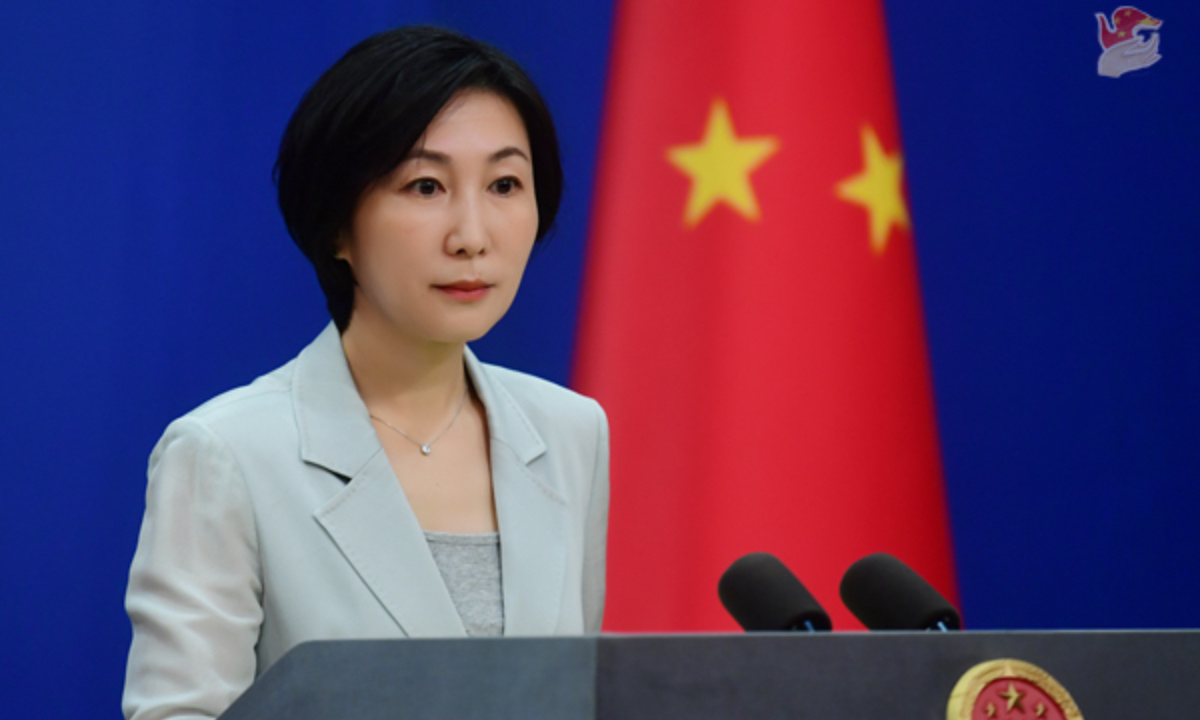
Foreign Ministry Spokesperson Mao Ning Photo: Ministry of Foreign Affairs

Foreign Ministry Spokesperson Mao Ning Photo: Ministry of Foreign Affairs
Chinese Foreign Ministry on Tuesday refuted the COVID-19 origin-tracing issue hyped up by US Ambassador to China, warning that politicizing the issue will not smear China, but will only undermine its own credibility.
Nicholas Burns, the US ambassador to China, said on Monday that China must be more honest with the origins of COVID-19 and urged China to take a more active role in the World Health Organization (WHO) after the US Energy Department concluded that the pandemic likely arose from a Chinese laboratory leak.
Chinese Foreign Ministry spokesperson Mao Ning refuted the accusation on Tuesday, saying that China has always been open and transparent on sharing relevant information and data with the international community in a timely manner in terms of the origin-tracing of COVID-19.
China is the only country that has repeatedly invited the WHO team of international experts to cooperate in the tracing of the origins of COVID-19 and China shares the most data and research findings on origin-tracing work, making important contributions to the global research of origin-tracing work, Mao said.
The US is the one who should respond to the questions and concerns from the international community about its Fort Detrick and military biological labs around the world, Mao said, noting that politicizing the issue will not smear China, but will only undermine its own credibility.
Mao said that Burns, as US ambassador to China, should do more to improve China-US relations and enhance understanding between the two peoples, rather than do the opposite.
Global Times












